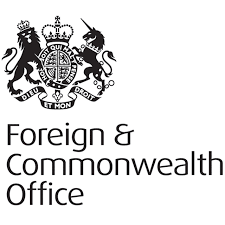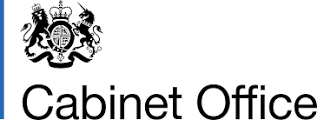PRESS RELEASE : Seventy years on from the Great Smog, Mayor warns that air pollution is still a matter of life and death in London [December 2022]
The press release issued by the Mayor of London on 5 December 2022.
Seventy years on from the Great Smog, Mayor warns that air pollution is still a matter of life and death in London
- A new report released today has illustrated the air quality issues Londoners faced in 1952, the year of the Great Smog.
- Great London Smog of 1952 led to an estimated 4,000 deaths.
- The first Clean Air Act was introduced in 1956 and was a significant milestone in the development of the legal framework to protect public health.
- Without the Clean Air Act an estimated 1,600 additional Londoners would have died prematurely each year from issues associated with air pollution.
- Mayor says more bold action is needed today as air pollution in London is leading to thousands of premature deaths each year.
Seventy years ago today, London was hit by one of the worst air quality disasters ever experienced in the UK. The Great Smog of 1952 lasted five days and was responsible for more than 4,000 deaths with 100,000 people made ill, leading to life-long conditions for many. The Mayor of London, Sadiq Khan, has warned that air pollution is still a matter of life and death in London and that bold action – like expanding the Ultra-Low Emission zone – is needed to save lives and protect the health of millions of Londoners.
City Hall has published a report today which looks at the air quality issues Londoners faced in 1952 and illustrates what air quality could have looked like if the Clean Air Acts of Parliament had not been introduced. The report looks at a hypothetical scenario to estimate what the present-day concentrations of air pollutants, like nitrogen dioxide (NO2) and particulate matter (PM2.5 and PM10), could have been without the Clean Air Acts.
Results from the calculation show that without the legislation, there would be:
· an additional 1,633 additional deaths per year – an increase of 22 per cent from the present day.
· an estimated additional 2,979 cardiovascular hospital admissions per year attributable to PM10 emissions in the Greater London area – an increase of 235% from present-day admissions associated with air pollution.
· an estimated additional 3,392 respiratory hospital admissions per year attributable to PM10 emissions in the Greater London area – which also represents an increase of 235% from present-day admissions associated with air pollution.
The report also shows the evolution of air pollution sources in London. Seventy years ago, the main causes of concern were smoke and sulphur dioxide arising from coal combustion from domestic fireplaces, power stations and industrial furnaces. Levels of air pollution have steadily declined since then due to the clean air Acts of Parliament, other legislation and interventions. Now the principal source of pollution in London is road traffic, contributing 44 per cent of all nitrogen oxides (NOx) emissions and 31 per cent of all PM2.5 emissions in London.
Studies show that air pollution is still causing thousands of Londoners to die prematurely each year and over 500,000 Londoners live with asthma, with more than half of these people living in outer London boroughs. Toxic air also contributes to children growing up with stunted lungs and causes adults to suffer a range of illnesses, including lung and heart disease and dementia in older people.
Sadiq Khan has made cleaning London’s air one of his key mayoral priorities. He introduced the world’s first Ultra Low Emission Zone in 2019, which has already helped to reduce roadside pollution levels by 44 per cent in central London and 20 per cent in inner London, leading to cleaner air for four million Londoners. Last month, the Mayor confirmed plans to expand the ULEZ London-wide in August 2023 to ensure five million more Londoners can breathe cleaner air.
Mayor of London, Sadiq Khan said:
“Four thousand Londoners died in the immediate aftermath of the Great Smog in 1952. The politicians of the day showed leadership by standing up to the vested interests and making the politically tough, but right choice to introduce the Clean Air Act, which ended up saving thousands of lives.
“Air pollution in London today is still a matter of life and death. But unlike the toxic pollution of the past, which could be seen, the air pollution today is an invisible killer. It’s making people sick from cradle to grave – from stunted lungs in young children to adult onset asthma, lung disease and dementia.
“The politicians in the 1950s led the way in how they tackled air pollution – now it’s our duty to take the action necessary to save lives so that we can continue building a greener, fairer and healthier London for everyone. That’s why we will be expanding the ULEZ London-wide. The ULEZ is our generation’s Clean Air Act. It’s already cut pollution levels by almost a half in central London, but thousands of Londoners are still dying prematurely each year due to poisonous air, with the greatest number of deaths in outer London boroughs. Expanding the ULEZ will mean five million more people will be able to breathe cleaner air.
“Every penny raised from expanding ULEZ will be reinvested back into delivering public transport, including the biggest ever expansion of bus routes in outer London. And we have announced the most generous vehicle scrappage scheme ever to help charities, small businesses and those on the lowest incomes.”
Jemima Hartshorn, Founder of Mums for Lungs, said: “Three things are clear: London’s air is toxic to children, stunting their lungs and exacerbating and causing asthma and many more; the Mayor’s initiatives have been crucial in cleaning up the air and lastly, much more needs to be done to ensure that breathing doesn’t make Londoners sick. We need a massive reduction of driving around our wonderful capital, and we need national government to sort out woodburning which is back on the rise, to the detriment of everyone’s health.”



